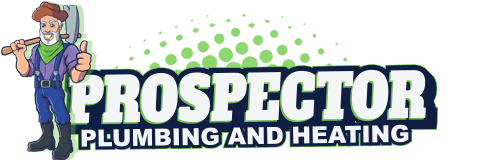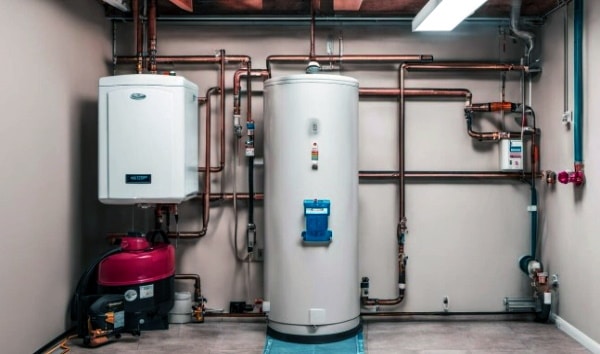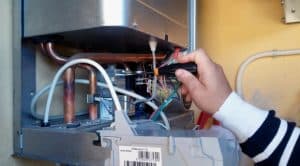Do you want to extend the lifespan of your newly installed water heater? Knowing what to expect and how to keep it in good condition will not only guarantee hot water whenever you need it but may save you significant costs in the future.
Here you will find expert-backed secrets for making sure your brand-new water heater reaches its full lifespan potential without breaking a sweat! Stay tuned and gain expert-backed insights that could extend its full lifespan potential without effort from its manufacturers or users!
Safety Measures After New Water Heater Installation
Congratulations on your new water heater installation. Now that your heating system is operational, it is vitally important that you prioritize safety measures to protect the well-being of both yourself and your household. By adhering to these guidelines, you can minimize potential risks while enjoying all of the advantages that your new water heater brings with peace of mind.
Once your installation of a water heater has been completed, make sure that you inspect its surrounding environment for signs of oil or gas leaks. If a strange odor, such as rotten eggs or sulfur, is detectable near the heater, it may indicate a gas leak. In such instances, immediately evacuate your home and contact emergency services or a professional service technician as quickly as possible to address potential issues promptly. Safety must always come first!
As well, it’s vital to become acquainted with the shut-off valves located near the water heater in case of emergencies or maintenance needs to quickly shut off water supplies in case of further flooding or damage. Furthermore, ensure easy access to an electrical switch or circuit breaker connected to your heater in case power has to be immediately shut off if required.
Understanding the optimal temperature setting for your water heater after installation is also vital to its safety post-installation. According to the United States Department of Energy’s recommendation, setting your water heater thermostat to 120 degrees Fahrenheit (49 degrees Celsius) may reduce scalding accidents while simultaneously improving energy efficiency and cost savings. Adjusting it appropriately not only ensures personal protection but also energy savings over time.
Be sure to keep the area around your water heater clear of combustible materials like chemicals, paint cans, gasoline containers, or cardboard boxes that could become fire hazards. Allowing enough ventilation helps avoid heat buildup and minimize fire risks. Should any doubt or questions arise in terms of safety measures, be sure to consult a professional plumber who will provide the necessary guidance specific to your installation project.
Verifying Safe Operation of Heating System
Once your new water heater is in place, taking time to inspect its safe operation is vitally important. Doing this ensures all components are functioning as they should and identifies any potential issues early. Let’s go over some key checks you should perform:
Inspection for Leaks: Carefully examine all connections, valves, and pipes for leaks; even minor ones can lead to water damage that compromises the performance of your water heater if left unaddressed.
Test Pressure Relief Valve: This valve serves to regulate pressure inside your tank and avoid excess buildup. Make sure it’s operating correctly by lifting its lever temporarily to release hot water before testing and properly sealing it shut afterward.
Check Temperature and Pressure Settings: Review the temperature and pressure gauges on your water heater to adjust them according to their recommended settings provided by the manufacturer, typically 120-140 F (49-60 C) for temperature and 40-80 psi for pressure.
Flush the tank: Over time, sediment can build up at the bottom of your water heater tank and decrease heating efficiency. Flushing it periodically helps remove this buildup and keeps your heater operating at optimal performance.
Keep an ear out for odd noises: Be on the lookout for any peculiar sounds coming from your water heater during operation, such as banging or popping noises, as they could indicate sediment buildup or an issue that needs professional assistance from a technician.
Remember, safety should always be top of mind when working with heating systems. Regular inspections by licensed plumbers can further ensure safe operation, extend the lifespan of your water heater, and avoid costly repairs in the future.
Checking Electrical and Gas Connectivity
Proper electrical and gas connectivity is critical when installing a new water heater to ensure its safe and efficient functioning. Here are a few key aspects to check during the post-installation stage:
At first, let’s focus on electrical connectivity. Begin by verifying that all connections are secure and tightened appropriately. Make sure the power source to the water heater has been switched off before inspecting any connections; inspect the wiring integrity as well. If any frayed or damaged wires are detected, professional electrician assistance should be sought immediately.
Not only should you check electrical connections when operating a gas water heater, but don’t overlook gas connectivity either! Inspect the line to make sure there are no leaks; use a soap and water mixture as an effective inspection solution on connections and fittings to see if bubbles form, which would indicate any gas leak. In such an instance, contact a licensed plumber with experience in fixing gas lines immediately for repairs.
Ensuring Appropriate Pressure and Temperature
Once you’ve verified proper electrical and gas connections, it’s important to focus on pressure and temperature settings, both essential components for efficient functioning.
Start by inspecting your water pressure. Make sure it’s set at an ideal level to avoid damage to both your plumbing system and the water heater itself, especially since excessively high or low water pressure could put a strain on components, leading to leaks, bursts, or other issues, while inadequate hot water supply could arise as a result. It is advised that you refer to the manufacturer’s guidelines or consult a professional plumber to establish what the optimal water pressure settings would be for your specific heater model.
Temperature settings must provide the ideal combination of comfort and safety, making the right balance a top priority. Most water heaters allow users to customize the temperature within certain parameters; too little may result in insufficient hot water, while too much can pose scaling risks or waste energy resources. Aim for a temperature that suits your household while remaining safe – typically between 120 °F (49 °C) and 140 °F (60 °C).
If your newly installed water heater is producing scorching hot water at lower settings, adjusting it down would be prudent for safety purposes. On the other hand, if only lukewarm water is coming out of your taps, increasing it slightly within recommended limits might help resolve this issue.
Keep in mind that maintaining proper pressure and temperature settings not only creates an enjoyable experience but can also extend the lifespan of your water heater while mitigating potential issues. Making regular checks of these settings and making necessary changes as required will keep your system running efficiently. Learn more about how to troubleshoot water heater issues!
Post-Installation Plumbing and Valve Assessment
Following the installation of a new water heater, it is essential to conduct an in-depth plumbing and valve assessment to make sure everything is running efficiently. Doing this will enable timely maintenance or troubleshooting as soon as any issues arise and identify potential areas for repair. Here is more on what this post-installation assessment entails.
First, examine every connection and joint in your plumbing system for signs of leakage or loose fittings, which could potentially damage property. Secure all pipes to avoid water leakage that could potentially harm the building itself; pay special attention to areas where pipes connect to water heaters as well as all sections of the plumbing system that connect.
Next, examine the pressure relief valve (PRV) of your water heater. This device plays an essential role in protecting against excessive pressure buildup within the tank and should be installed and functioning as intended without leaks or improper installation. Lift and release its lever. When tested successfully, you should hear a brief rush of air or see some water discharged briefly through an overflow pipe before stopping; any ongoing leakage or issues could require replacing it.
Make sure that all shut-off valves associated with your water heater are also checked thoroughly. These allow you to control the flow of water into and out of your unit for maintenance or repair purposes as necessary, as well as check for any leakage around them and make sure they function without any blockages or restrictions.
As part of your assessment, be mindful to look out for any signs of corrosion on pipes, fittings, or valves. Corrosion can weaken these components over time, potentially leading to leaks or other malfunctions. If any signs of corrosion appear in your assessment procedure, consult a professional plumber who can assess its severity and determine an effective course of action.
Examining the Security of Pipe Fittings
As part of your post-installation maintenance for your new water heater, you must inspect the security of its pipe fittings. Secured and tightened fittings are key for efficient water flow as well as preventing leaks; let’s explore what this examination involves further.
Launch an inspection of all pipe fittings connected to your water heater. Look out for any signs of loose or poorly tightened connections; even small gaps between pipes and fittings can eventually lead to leakage problems. Tighten any loose connections using an adjustable wrench to help avoid future complications.
Next, inspect the condition of the pipe threads. Over time, threads can degrade or wear down, impairing their ability to create an effective seal. Examine all threaded pipes and fittings closely for any signs of damage or wear-and-tear; any issues should be immediately reported so replacement components may be ordered if necessary.
For optimal sealing and leak prevention, thread seal tape or pipe joint compound may help enhance sealing effectiveness between threaded connections during installation or when making adjustments later on. These materials provide additional protection from potential leakage issues by providing extra seals between pipes and fittings and additional protection from potential leakage issues.
As part of your assessment of pipe fittings’ overall stability, ensure they are adequately supported and not suffering under unnecessary strain. Adequate support helps avoid stress on joints and reduce leaks or pipe failure risk; any loose fittings should be reinforced using brackets or hangers if necessary.
Operating the New Water Heater
Now it is important to get acquainted with its operation to ensure maximum functionality and efficiency when providing you with hot water. Here are some key aspects to remember when using your new water heater:.
Primarily, it is critical to familiarize yourself with all of the controls and settings of your water heater. Most models include temperature controls that enable you to set the desired hot water temperature with dials or buttons; this ensures safety by avoiding accidental scalding incidents, especially if children or elderly members of your household live nearby. Furthermore, familiarize yourself with power settings as well as any specific operational features unique to your model water heater.
Once you are familiar with your water heater’s controls, it’s time to power it on. Depending on the type of unit installed, this may include turning on its gas supply or plugging it into an electrical outlet. Make sure all connections are secure before following manufacturer guidelines for optimal powering on.
Contact Prospector Plumbing and Heating To Learn More
Now that you’ve successfully installed a water heater in your home, you have taken an important step toward increasing comfort and convenience in your living environment. At Prospector Plumbing and Heating, we are here to guide you through every aspect of plumbing and heating needs in your life.
If you have any inquiries or require further assistance concerning a new water heater or any of our plumbing and heating services, don’t hesitate to reach out; we are more than willing to help! We look forward to being of service.
Reach out to Prospector Plumbing and Heating today at 907-322-5763 for expert advice, maintenance, or any of your plumbing and heating service needs—whether that be advice on home efficiency improvements or simply to ensure maximum comfort! Our priority is keeping you comfortable.


